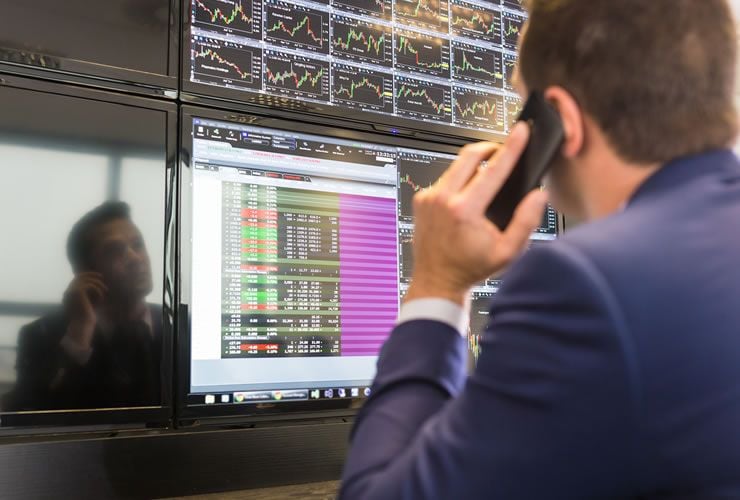The US Dollar Still Has Legs say Credit Agricole, but Others Disagree

The failure of the Trump administration to repeal the Affordable Care Act has led to a further weakening of the US Dollar with many in the foreign exchange market starting to draw the inevitable conclusion that the Dollar has had its time in the sun.
The argument goes that Donald Trump is not going to be able to deliver on his pre-election promises after all. And without sharp tax cuts and increased Government spending on the US economy, the Dollar does not justify higher valuations.
Trump’s policies had been expected to help provide growth for the economy which would lead eventually to higher interest rates and an appreciation of the Dollar.
"Uncertainty generated by the wrangling over the US healthcare bill continues to weigh on USD sentiment. The USD pared losses in New York trading but still remained down c.0.4% from last Friday. GBPUSD broke its recent range, pushing above 1.2600 yesterday to highs of 1.2615 (Bloomberg) but has dipped back below the level since," says a note from Barclays Bank to their commercial clients, dated March 28.
Yes, he Trump will certainly deliver on some promises, but Congress has shown us he does not have an open ticket.
But it is too soon to write the Dollar rally off suggests Valentine Marinov, head of FX strategy at Credit Agricole, the France-based banking giant.
Marinov argues there is more to the Dollar than just the Trump trade and there are other reasons to expect the currency to remain a contender.
“We think that the USD-rally rests on several pillars at the moment. The one linked to Trump fiscal stimulus has started to crumble more recently. That said, the pillars linked to Fed tightening and US protectionism still seem to be largely in place. Indeed, we believe that the Fed will continue to hike rates despite the growing policy uncertainty,” says Marinov in a note seen by Pound Sterling Live dated March 27.
Part of his optimism towards the Dollar rests of the belief that the, “animal spirits that Trump helped reinvigorate will remain largely in place given the improving conditions in the US and global economy and prospects for further deregulation.”
Selectively Bullish on the Dollar
The latest developments make Marinov doubt the Dollar's ability over the long-term but he still remains bullish, albeit selectively so.
Sterling and the Yen are seen as two targets for the Dollar to gain against once the current bout of weakness has passed.
The call by Marinov comes at a time of gains for the Pound to Dollar exchange rate which has risen from 1.2109 to 1.2565 over the course of the past three weeks.
But the Credit Agricole analysts believe the Dollar is also likely to make gains versus the Euro which will remain weak due heightened political risk in the Eurozone.
This despite anti-Euro Le Pen languishing in polls.
The Dollar could also strengthen versus the commodity currencies – the Australian Dollar and the New Zealand currency – due to China slowdown from Trump implementation of trade tariffs.
Furthermore, Marinov’s studies suggest the Dollar remains “overvalued” against most partners and therefore susceptible to weakness.
“According to our long-term fair value model G10 VALFex, the USD already looks quite overvalued vs SEK, EUR, JPY and GBP and that should limit any future gains,” said the analyst.
The Swedish Krone is likely to gain more ground versus the Dollar ahead of key data this week.
Dollar has Had its Day
As mentioned, there are those out there who think the Dollar has seen the best of its strength pass.
We reported on Monday, March 28 that technical strategists at Credit Suisse believe the Euro-Dollar exchange rate is in the process of bottoming and changing to a more bullish structure.
Above: Technical studies of the EUR/USD charts by Credit Suisse suggest the Dollar’s advance might be ending.
“Above 1.0821/29 suggests a potentially important base is completing,” says David Sneddon, a technical analyst at Credit Suisse in London.
Sneddon observes large base is in the process of forming to aim at the November high and the falling 200-day average at 1.0874/82.
“Follow-through here would mark a potentially significant change in structure, for 1.0979 initially,” says Sneddon.
Analysts at Danske Bank meanwhile argue that it now looks probable that EUR/USD is basing and will rise in the medium to long-term, perceiving the possibility of weakness as a short-term possibility.
Senior Analyst at Danske Bank, Morten Helt, argues Donald Trump’s fiscal stimulus promises via a generous programme of infrastructure spending (the Homeland Investment Act) and tax reform now look less likely to materialise in the short-term, and the Dollar has weakened because of that reassessment.
Another major impediment to the stimulus plans is the US debt ceiling which has been reached and cannot legally be breached.
“We believe EUR/USD is close to forming a base. In our view, relative rates remain EUR/USD bearish as the Fed is slightly under-priced and the ECB is priced too hawkishly. However, the argument we had for a short-term move lower in EUR/USD driven by more clarity with regard to a possible US border tax adjustment and Homeland Investment Act II is fading,” says Helt.
Danske Bank are forecasting the EUR/USD exchange rate to rise to 1.14 over the course of the next 12 months.

